| Sliding down a wire |
Here's the problem:
A bead slides without friction down a wire. | 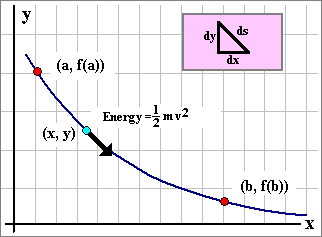 |
>I'd say about two minutes.
Pay attention!
If the bead falls to a height y, it has lost gravitational potential energy m g (f(a) - y) and gains an equal amount of kinetic energy 1/2 m V2.
>V is the speed along the wire?
Yes, so g (f(a) - y) = 1/2 V2 and
[1] V2 = 2g (f(a) - y).
Note that the final speed of the bead is SQRT{ 2g (f(a) - f(b)) }.
But, the speed along the wire is ds/dt where s is the arc length ... which we measure from the starting position.
Since ds2 = dx2 + dy2
(see the little picture?)
and V2 = (ds/dt)2, then
V2= [1 + (dy/dx)2](dx/dt)2.
>Huh?
Remember, [1 + (dy/dx)2] = 1 + (slope of tangent)2.
Anyway, [1] becomes:
[2] [1 + (dy/dx)2](dx/dt)2 = 2g (f(a) - y).
Solving for dt, we get:
[3] dt = SQRT{ [1 + (dy/dx)2 / 2g (f(a) - y)] } dx.
Since y is presumably a known function of x, we get the time as:
 |
>Example?
Here are some examples:
so f(a) - y = x2 and dy/dx = -2x. We get:
integrated from 0 to 1.
| 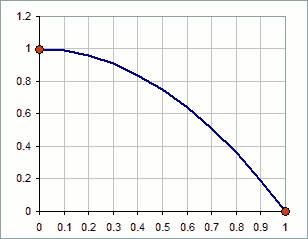 |
so f(a) - y = 1 - e-x and dy/dx = -e-x. We get:
integrated from 0 to 1. | 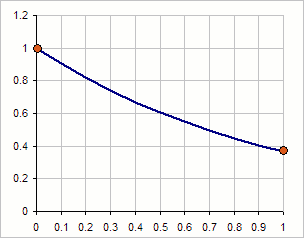 |
>So where's the answer?
I'll leave the integration as an exercise. 
Here's an easy one: y = f(x) = 1 - x, a = 0, f(a) = 1 and b = 1 so f(a) - y = x and dy/dx = -1.
integrating from 0 to 1. | 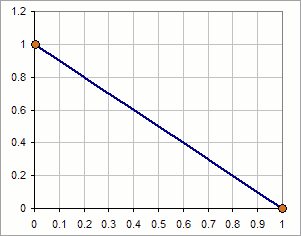 |
Let's construct a 1-parameter set of curves and see which value of the parameter gives the minimum time ... hence the minimum of 
>Huh? Suppose we consider, say y = 1 - xK with a = 0 and b = 1, as shown here with K = 1/2 
Then dy/dx = -K xK-1 and out Integral becomes: ∫ SQRT{ (1+K2 x2K-2) / xK } dx ... integrated from a = 0 to b = 1. >Can you integrate that? I don't intend to. I'll evaluate it numerically with a ... >With a spreadsheet, right? You got it. | 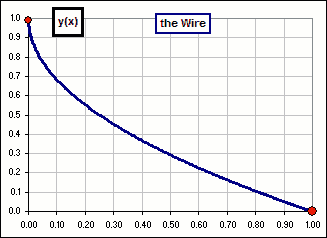 |
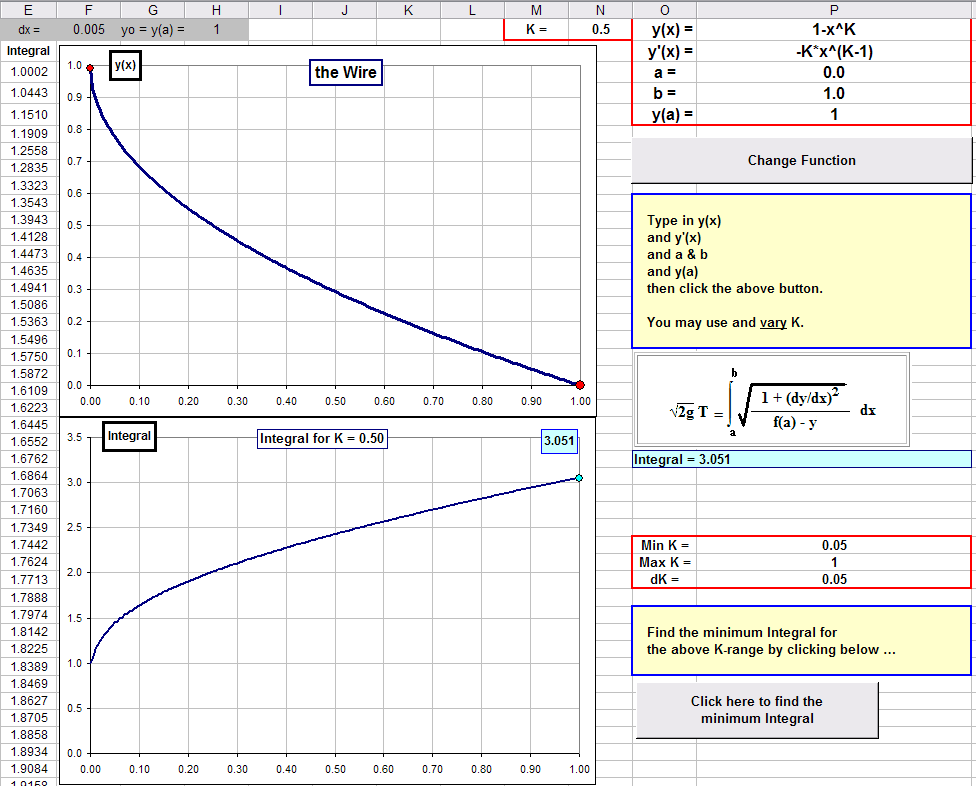
Click on the picture to download the spreadsheet
The Integral is (usually) impossible to evaluate in terms of elementary functions ... hence we use Simpson's Rule
You type in your function y(x) and its derivative, in cells P1 and P2, as well as the values of a & b and y(a) and, if you like, a value for K in cell N1.
When you click the Change Function button, your function is inserted in appropriate cells and the plot of y(x) is generated.
After this, you may change K to see what the curves look like ... sorta like this.
>So what's the "best" K-value? I assume I click another button?
Yes. You can type in some range for the K-values (and an increment for K) and click that other button. The minimum Integral (using, of course, Simpson's Rule) is K = 0.8.
>I that the fastest time? I mean, won't a staight line give a smaller Integral?
Try K = 1 and see !
| the Brachistochrone |
The more interesting problem is: "What curve will give the minimum Time Integral?"
>And the answer is ...?
It's called the Brachistochrone. Check it out.
It's quite interesting that a straight line doesn't give ...
>Yeah, but where's the spreadsheet?
It's here:
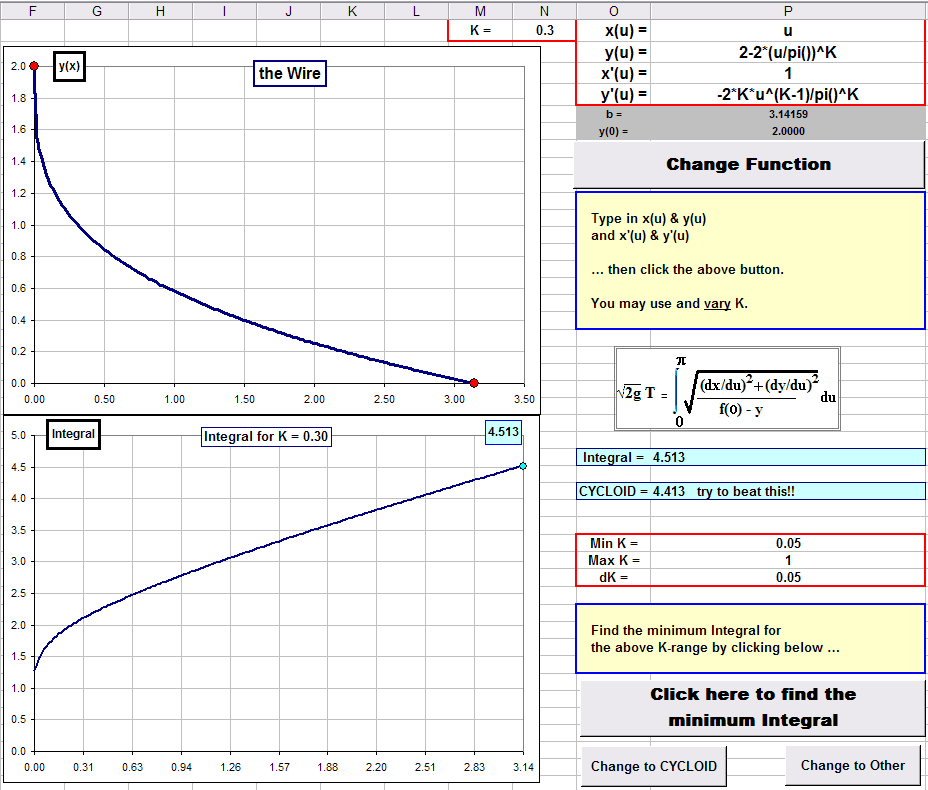
Click on the picture to download the spreadsheet
I don't see no cycloid.
See the button called Change to CYCLOID? That'll give the cycloid and the minimum Integral value ... within the accuracy of Simpson's Rule !!
Note that the curve is given parametrically: x = x(u), y = y(u) with u going from 0 to π.
Note, too, that the xpression for the Time changes to:

You can enter your own K-parameter family of curves way over in column AA, like so 
There's a button that'll change to this "Other" curve ... in which case you can play with the K-value. Note the value of the Integral when the curve is the Cycloid.
| 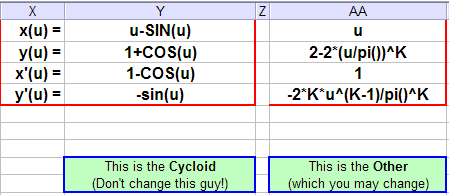 |
Finally, note the equations of our Cycloid: x(u) = u - sin(u) y(u) = 1 + cos(u).
It's then easy to show that:
(dx/du)2 + (dx/du)2 = 2 (1 - cos(u)) = 2 (y(0) - y) so the integrand is a constant, namely SQRT(2).
Ain't that neat!
Note: The solution for the Brachistochrone (even with friction!) is given here.
 = ∫ SQRT{ [1 + 4x2] / x2 } dx
= ∫ SQRT{ [1 + 4x2] / x2 } dx


